'It’s just extraordinary'
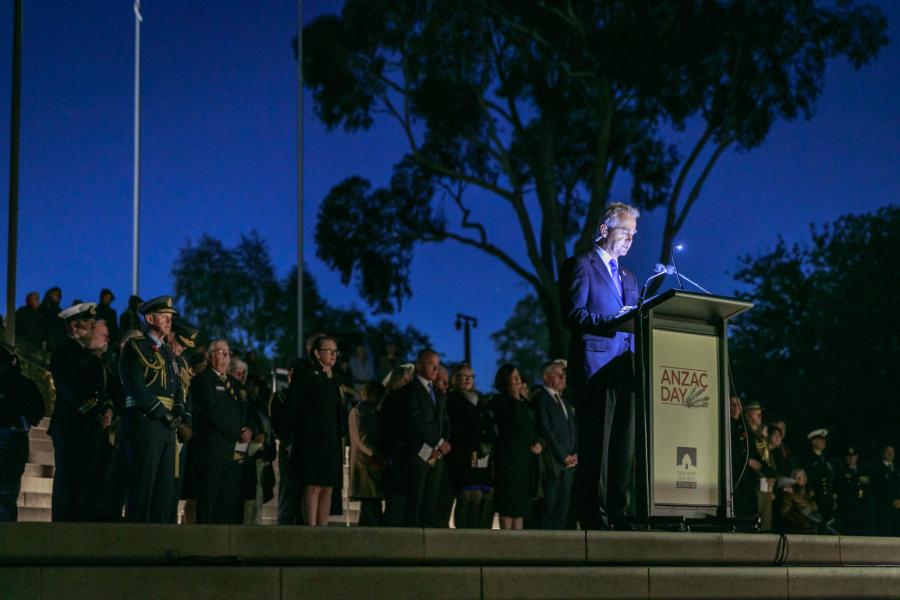
Each Anzac Day, Scott Bevan stands quietly in the predawn at the Australian War Memorial in Canberra as he prepares to lead the National Dawn Service.
For the respected writer and journalist, it’s a deeply personal moment, but one that he shares with the tens of thousands of people who gather at the Memorial each year to commemorate the anniversary of the Gallipoli landings more than 100 years ago.
“It’s just extraordinary,” Bevan said. “When I stand there, the importance of the event just hits me, and there’s no word for it; honour doesn’t fully explain what courses through me … but it is an incredibly deep honour to guide this ceremony.”
Bevan has been the master of ceremonies for the Memorial on Anzac Day and Remembrance Day for the past few years, but this year’s Dawn Service will be different.
For the first time in the Memorial’s history, the traditional Dawn Service and National Ceremony will not take place due to public health restrictions introduced to combat the COVID-19 pandemic.
Instead, the Memorial will hold a special Anzac Day commemorative service in the Commemorative Area and Hall of Memory at 5.30 am which will be broadcast live across Australia by the ABC and streamed online.

“It will feel different without that physical coming together,” Bevan said. “But I think the importance in having this event this year is as great as ever.
“It is one of the cornerstones of who we are and where we are from, and in the midst of change and uncertainty, I think it’s more important than ever that we hold onto that cornerstone; that we, above all else, continue to honour and pay our respects to all those who have served, and to their loved ones, past and present.
“That is what the day is about, and it makes me think of the Hall of Memory with its stained glass and those words, just those simple words; words like comradeship, independence, and particularly this year, endurance.
“I think those words will resonate with meaning for everybody, and in a very small way each and every one of us – not presuming to fully understand how those people who have stood on the front line feel, or what it’s like to be in a theatre of war – can show endurance, and show devotion, and show loyalty; these words that are in the Hall of Memory that characterise what servicemen and servicewomen have always shown.

“And we can do that in our own small way by saying: yes, we’re facing uncertainty; yes, this is a mighty strange time; yes, this ceremony is not the same as how it may have been planned, or how we are used to it being held, but we will in our own small way, and to the best of our ability, live up to those qualities and those characteristics and remember.
“Even though physically, we can’t all be there, there will be a real sense of community and connection ... and I think it will have a resonance for all of us as we think about all of those who have served and continue to serve.
“And I’m just honoured to be able to be part of this much changed ceremony, which I believe will be as meaningful, and as significant as any other ceremony that has been held at the Memorial.
“To be right there, close to the Hall of Memory, to those words, to those images, to those bronze panels, and to those long lines of names of people who have served and paid the ultimate sacrifice, will be not only incredibly meaningful, but incredibly moving as well.”
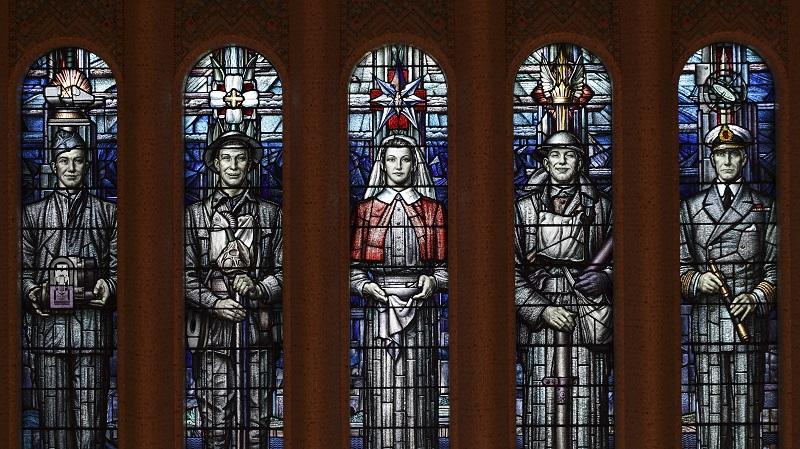
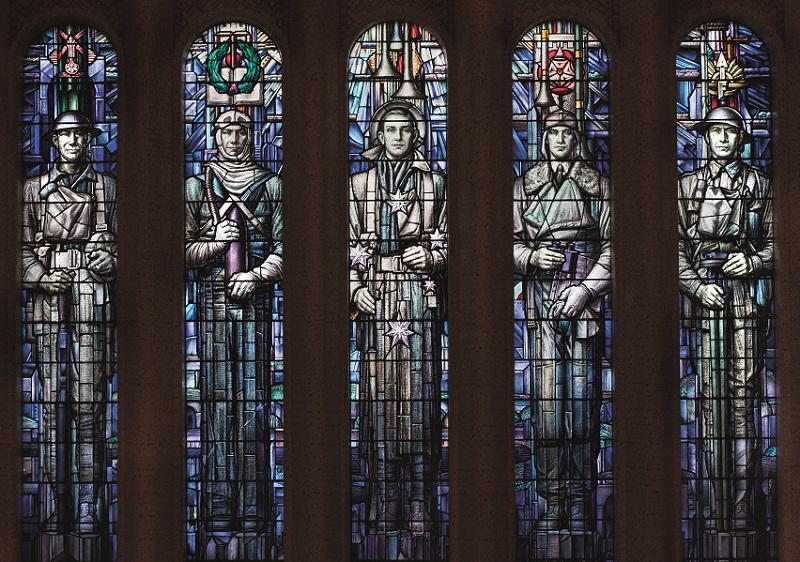
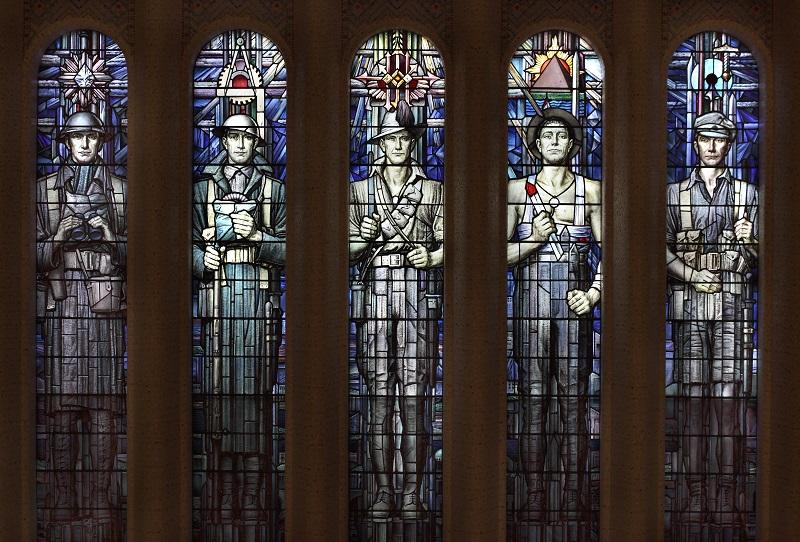
Bevan will never forget being asked to be the master of ceremonies at the Memorial’s Anzac Day and Remembrance Day ceremonies.
“I couldn’t believe that I was being asked to MC these services – these extraordinary events – in a place that had shaped me, and shaped so many of us; a place where as a kid I’d go and get my first understanding of what my grandfathers and great uncles had been through, but didn’t really want to talk about, so to have the honour of emceeing events that honoured not just my family members, but Australians now and in the past was just extraordinary.
“I still remember reading the letter … and thinking my goodness; it took me some time to digest it and take it in, and the enormity of what I was being asked, and the honour of it… It took my breath away as I read it.”
Bevan’s paternal grandfather, William Bevan, served in the First and Second World Wars. He was awarded a Military Cross for his actions in the battle of Peronne in 1918, and is mentioned in Charles Bean’s official histories of the First World War.
He died before Bevan was born, but Bevan grew up hearing about his story, and would spend time with his maternal grandfather, Oswald Lang, who served in New Guinea during the Second World War.
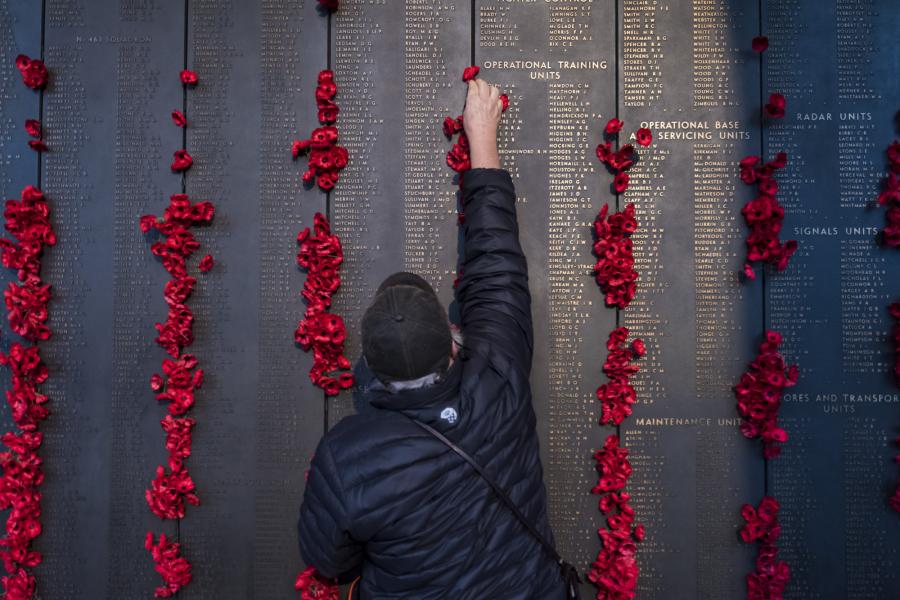
“I had a lot to do with my maternal grandfather but we didn’t speak about the war,” he said. “He was a gentle warm soul who got on with life.
“One of my great uncles was a prisoner of war in Changi during the Second World War, and it was hard for them to talk about it, especially to a boy, but another great uncle, Fred Frost, would talk to me about his time on the Western Front during the First World War.
“He had what was almost like a talisman in the top drawer wrapped in cotton wool. It was a piece of shrapnel that had been removed from his shoulder, and I remember as a kid him showing it to me.
“He would open the drawer of his tallboy, and he would take it out, and unwrap it, and show it to me, this lump of metal, and I would try to imagine what that was like, and that’s where the connection comes in with the Memorial.
“It was when I first went to the Memorial I could literally see, thanks to the artefacts and the dioramas and the war art, what they were talking about; I could finally put a picture to their stories, and of course that meaning, and the importance of the Memorial, has only grown through the years as a result.”
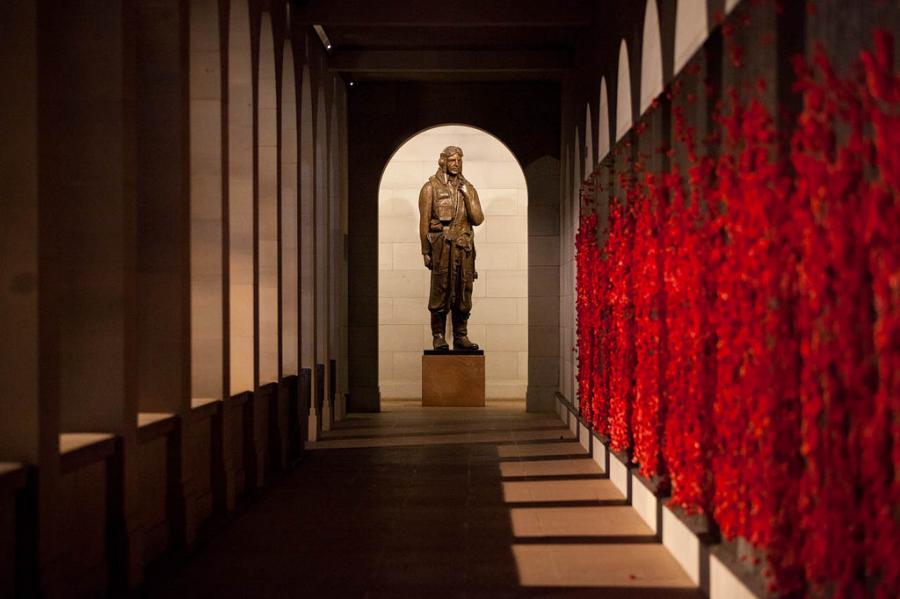
He remembers attending dawn services as a young man growing up in country New South Wales and reporting from Villers-Bretonneux on the Western Front and Gallipoli on the centenary of the Anzac landings.
“Both my grandfathers were members of the East Maitland sub-branch in the Hunter Valley so we would get up very, very early to be up there for the Dawn Service, and it grew through the years,” he said.
“When I was based in Moscow, we went over to the battlefields of northern France one holiday and went to the places where my grandfather had fought, which was incredibly moving, but the most beautiful thing is we went to the war museum in Peronne.”
All Bevan had to go on was a photocopy from the page from Bean’s book and his grandfather’s citation, but a curator helped him find where his grandfather had served, and gave him directions so that he could visit the spot where his grandfather performed the action for which he was awarded the Military Cross.
“It was an amazing one connection to have with my grandfather, and with the past, and with Australia’s history,” he said.
This Anzac Day, Bevan will be once again thinking of his family and all those who served as he leads the special commemorative ceremony at the Memorial.
“I’d hope to think they’d be proud, and they in turn understood how proud I am of them, and of anybody who has served, and what they have done,” he said.
“For me, that is the main motivation and emotion I feel as I stand there; just immense pride and gratitude.”
The Memorial is temporarily closed to the public, but the Memorial is still telling stories about the Australian experience of war. To learn more visit here.
There will be a nationally televised Anzac Day commemorative service on 25 April 2020 which will be closed to the public. The ABC coverage will begin at 5.00 am with the service starting at 5.30 am. It will also be streamed live online.